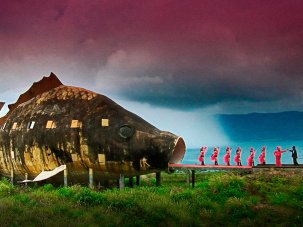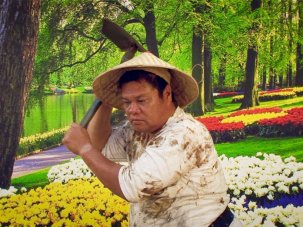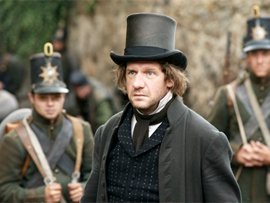Web exclusive (excerpts from this interview appear as a feature in our July 2013 issue)
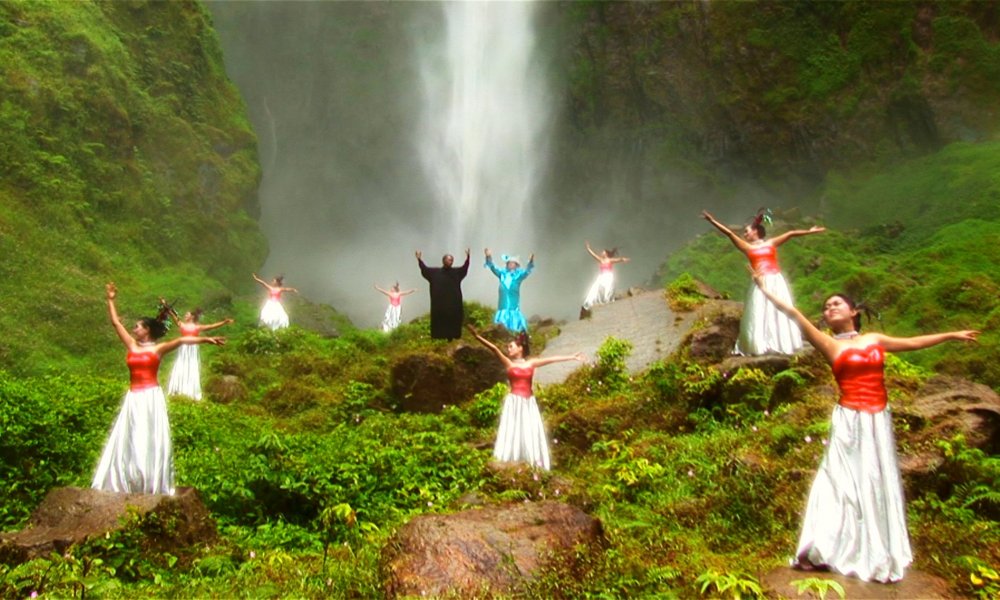
Criminals at large rarely volunteer their crimes for the camera; similarly, perpetrators of political atrocity tend not to make the kind of song and dance about their misdeeds that might constitute evidence for the record. (Statues, salutations and the smell of fear are usually adequate to their needs.) It seems safe, then, to call Joshua Oppenheimer’s The Act of Killing the world’s first self-indicting genocide musical, featuring as it does a cast of smiling gangsters who recollect and re-enact – with increasingly outré cinematic licence – their roles in Indonesia’s barely acknowledged anti-communist bloodbath of 1965-66, following General Suharto’s coup, when leftists and ethnic Chinese were slaughtered by the million, with the arms and connivance of the West.
Still, these feats of historical illumination, political agitation and aesthetic innovation are but half of the film’s accomplishments, which also dig deep into the ironies and ambiguities of human self-image. The film is an eye-opener for Anwar Congo, the film’s silver-haired principal, who cooperated most intimately with Oppenheimer to revisit old killing scenes, re-rehearse his methods, faithfully render the movie’s recreations and give wing to its expressive flourishes. (He’s helped in much of these by his fat, cross-dressing sidekick Herman Koto, and to a lesser extent by his more sober blood comrade Adi Zulkadry, who takes his leave once he’s digested what the film is likely to do.)
As he watches himself on playback (inviting his grandsons to come see him playing one of his torture victims), Anwar peers at himself critically: is his hair colour inaccurate? Is something else not right? Introspection comes reluctantly to such men, but in bringing us close to them, the film also asks us to let down our defences and recognise something of ourselves.
Nor does it spare its own medium, holding up a mirror to the movies themselves, and our use of them. In Marxist terms, cinema gave Anwar and his fellow cinephile gangsters both a base economic impetus for their violence (the Communist Party of Indonesia had supposedly threatened quotas on the Hollywood movies which they touted), and a superstructural disposition: Anwar shows us how he used to dance his way across the street from the cinema, high on Elvis musicals, to the office where he did much of his killing.
And what else was it all for? Oppenheimer gives us passing glimpses of modern Indonesia’s hardly exceptional culture of enduring gangsterism – dominated by men richer and nastier than Anwar; of fear, corruption and vacuous consumer capitalism.
Oppenheimer hails from America – land of guns, movies and ‘freedom’, which seems to have given him an early pass to his subjects – though he has since relocated via the UK to Denmark. He previously gained some acclaim for his 1996 ‘fictional documentary’ The Entire History of the Louisiana Purchase, and with co-director Christine Cynn (who also co-directed The Act of Killing) came to North Sumatra at the turn of the century to make The Globalization Tapes (2003) in concert with unionised plantation workers.
The Act of Killing has taken him around the world, seemingly winning awards wherever he goes; I spoke to him by Skype from Warsaw, where he’d had an hour’s sleep after flying in from Tel Aviv (and was due in Sydney a week later). He nonetheless managed to hold forth at length about the film’s genesis and inspirations, his anonymous Indonesian co-authors, how Errol Morris and Werner Herzog embraced the film as executive producers and why he has two different edits of the film (a 115-minute standard and 159-minute director’s cut) on release. What follows is a light edit of that extended conversation.
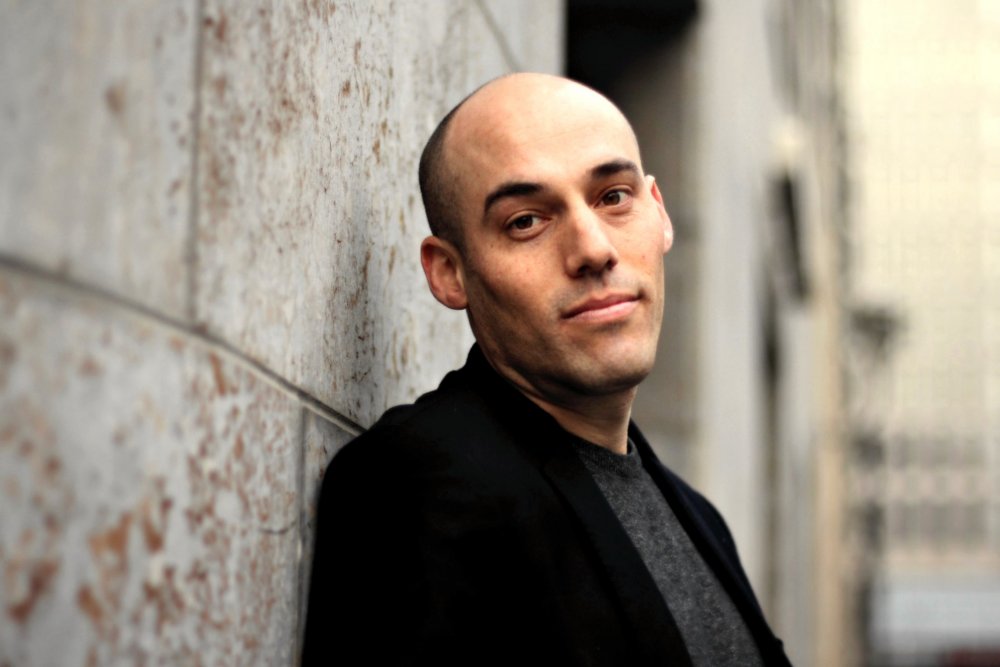
Joshua Oppenheimer
Nick Bradshaw: The film makes horribly clear that history is written by the winners – it reminded me of that counter-factual strain of fiction in which we live under the dominion of, say, the Nazis. And then you remember that you don’t always have to reach for fiction for examples of nightmarish regimes, though perhaps it’s easier. But there are a number of countries in which the killers have won, and here, remarkably, is a documentary from one.
Joshua Oppenheimer: And we in the West depend for our everyday lives on exactly those regimes to make everything we buy cheap, by using a terrifying history to intimidate the people who make it so that the human cost of its production is not included in the price tag. So on the one hand it seems like an alternative reality; on the other hand it’s an integral part of our reality – the underbelly of it.
And at the same time we tell ourselves stories about how the Nazis were defeated and the killers got their comeuppance – which I think primarily serve as escape from the reality that behind everything we consume there’s been mass political violence, and the perpetrators have won and have built a regime of terror on the basis of that victory, [with] men like Anwar and his friends keeping people afraid.
And for viewers who have the courage to identify even a tiny bit with Anwar at some point during the movie, the cold dichotomy between good guy and bad guy inevitably collapses, and the film becomes a dark mirror held up to all of us, not just the Indonesian regime. We see ourselves in the film, and how it’s not just Anwar who is damaged by what he’s done, but that we are also damaged by the way that we are perpetrators.
It’s what philosophers call alienation. This may sound abstract, but what the film tries to do is a kind of phenomenology of alienation: what is the experience of alienation? And I think that’s where the film is most devastating for viewers who aren’t coming at it as a big political documentary, but just as ordinary viewers.
What were your feelings working with Anwar and his friends through all those years? Did you see them as evil? Insane? Products of their situation? Not so different from us? How close or separate did you keep them?
My feelings evolved. I began this project working closely with survivors, trying to film memories of the horrors of 1965 and to document the regime of fear and violence built on the celebration of killing. But every time the survivors and I tried to film together we would be arrested and stopped.
Finally the human rights community, and the survivors themselves, said, “Film the killers: they will talk, and not just talk, they’ll boast. And the audience, seeing people who killed hundreds, thousands of people, and boasting about it, will see at once why we’re so afraid, and taste a little bit the nature of this regime.”
You can’t go into a situation where a million people have been killed and people are celebrating it and come out clean.
And [from then on] I felt I was entrusted with a work of historical and moral importance, exposing a regime of impunity through its celebration of killing. At that point I think I saw [killers like Anwar] as the people who killed my friends’ relatives and were keeping my friends afraid. But inevitably I became close to them. It was a very intimate journey: I think to make a good film with anybody you have to get very close, be willing to be intimate. I went looking for embodiments of pure evil, but found ordinary people.
And in order to understand how these ordinary people live with what they’ve done – how they want to be seen by the world, but also how they see themselves – it became hateful and haunting and difficult in a whole other way. You can’t go into a situation where a million people have been killed and people are celebrating it, and come out clean – unless you lie about it, or about your position. If you want to look at the most important questions – what is the nature of this regime? How do we do this to each other? Okay, these men are boasting about what they’ve done: why and to what end? And what are the effects on the whole society, first and foremost, and on them personally? – you can’t remain pure and clean, because it’s a terrible situation you’ve waded into and you’re getting very close to it.
There’s a section in the longer version of the film which shows the evolution of how Anwar comes to play the victim. It was a truly harrowing passage: a week of filming these film noir re-enactments which got more and more brutal. He would oscillate between remorse and self-pity, and the self-pity would make him sadistic and then he’d feel more remorse, and it would cycle downwards.
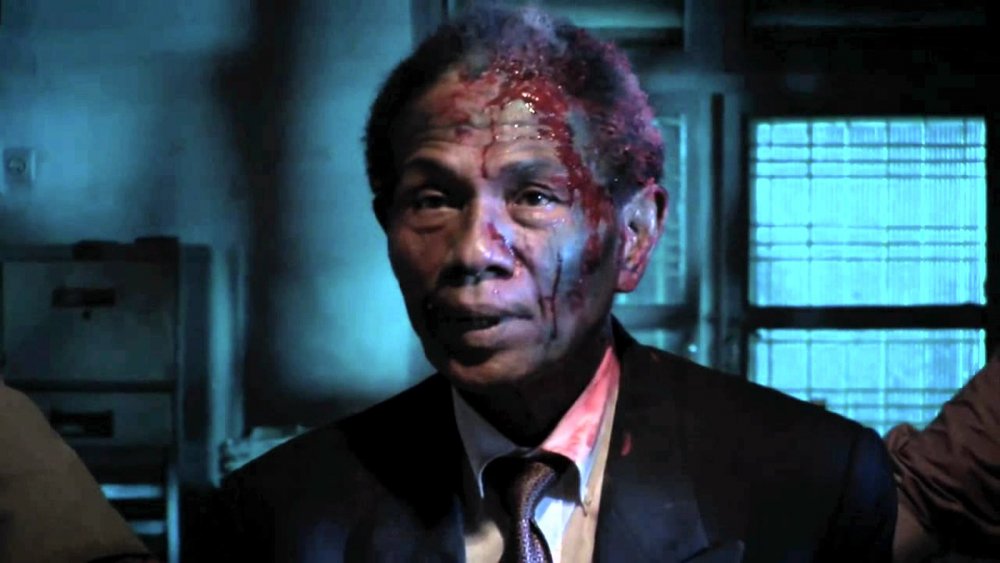
Shooting that was just awful: it was terrifying, it felt filthy, and I had nightmares and couldn’t sleep because I was afraid of the nightmares. I’d sleep two hours, not at all the next day, then crash and sleep ten or 12 hours, and then it would start again. It went on for six months like that, really horrible insomnia. It was hard.
I have an Indonesian co-director who gave eight years of his life to make this film, knowing he could never put his name to it. During the shoot he was my assistant director, my production manager, my second cameraman, my main creative sounding board when we hit a dead end. He lightened the journey; I think we both had nightmares but we supported each other a great deal.
Did Anwar and friends understand you were making a film above and beyond what they were directing with you?
Absolutely: they were never making any other film, and they knew that from the beginning. I think that’s something that viewers sometimes forget, particularly watching the shorter version of the film. Because I think they’re so into what they’re doing that we assume they must be making their own separate work, or think they are. But they’re not.
Anwar was the 41st perpetrator I filmed, and the first 40 were equally open and boastful. I started in a village of survivors, and worked my way up a chain of command until I met people well above Anwar. He was along the way.
And the people I filmed all, within minutes, volunteered not just to tell me what they’d done but to take me to the places where they killed, show me how they did it and bring along machetes to use as props, friends to play their victims. At the start I was primarily trying to understand what happened in 1965; swiftly I started to ask myself ‘What is going on now?”, that these men thought it was appropriate to dramatise what they’d done, even in rudimentary re-enactments, which is how it began.
Anwar, the very first scene I shot with him is where he goes up to the roof and dances the cha-cha-cha at the beginning of the film. By the time I met him I was proposing the following to the people I met: I would say, “Look, you’ve been involved in one of the biggest mass killings in human history, your whole society is based on it, your lives are totally shaped by it, and I want to understand what it means to you and what it means to your society. You evidently want to show me what you’ve done and tell me about it: show me, in whatever way you wish; I will film it, and I will also film the process of your planning the re-enactments, choosing who to bring, what to show and what not to show.
“I will combine this sort of making-of material with the re-enactments themselves, and so create maybe a new form of documentary” – I did not yet know it would be so surreal, that the dramatisations would become stylised in the way they ultimately did. But a new form of documentary that combines re-enactment with its preparation “as a way of showing what these events mean to you and your society, a kind of documentary of the imagination rather than a documentary of everyday life.”
And I said “I don’t know if this will work, but let’s try.” And indeed I didn’t know. But I felt it was important. And I guess I thought it was the right way to address the situation that I was encountering. And so they were told from the outset that there’s no other film, and indeed the opening text of the film says that, it says in response to their openness we asked them to create scenes – scenes – about the killings, in whatever ways they wished.
I would simply ask “What do you do for a living?”, and within five minutes I’d get these horrible stories of cutting people’s heads off with a knife.
And that’s what they’re doing. There was no deception or luring involved, if you see what I mean. The whole method was a response to their openness, an attempt to understand why are they so open, and what is achieved for them through this openness? What are they doing by boasting? There was no inveigling them to tell me what they’ve done, pretending to have a different agenda than what I had. I was simply able to ask “What do you do for a living?”, and within five minutes I’d get these horrible stories of cutting people’s heads off with a knife. And not just from one killer but from every killer I met.
How much exposure did they imagine or contemplate the film getting?
None of us imagined the film getting the exposure it’s having. Adi, the other killer, says very openly in the film, this film: if we succeed, is going to totally turn the story around 180 degrees. They’re wrestling with those questions throughout the film. Adi warned Anwar about this many times before he quits the film – you only see it once because it would have been repetitive, but in fact he warned him multiple times.
And Anwar continued – I think because his fundamental goal is not to make himself look good. I think Anwar is trying to somehow run away from his pain, to use the filmmaking process much as he used Elvis Presley movies at the time of the killing to distance himself from the act of killing. He would watch an Elvis movie, feel like Elvis, dance his way across the road and kill happily, and in that way dissociate himself somehow from what he was doing.
I think in the same sense he hopes – as he says in the longer version of the film – if he can make a beautiful family movie about mass killing then he can somehow put it right and make it okay for himself. He’s drawn to the pain, to the most horrifying memories and to re-enacting them, because somehow he’s trying to replace the miasmic, shapeless, unspeakable horror that visits him in his nightmares with these contained, concrete scenes. It’s like he’s trying to build up a cinematic-psychic scar tissue over his wound.
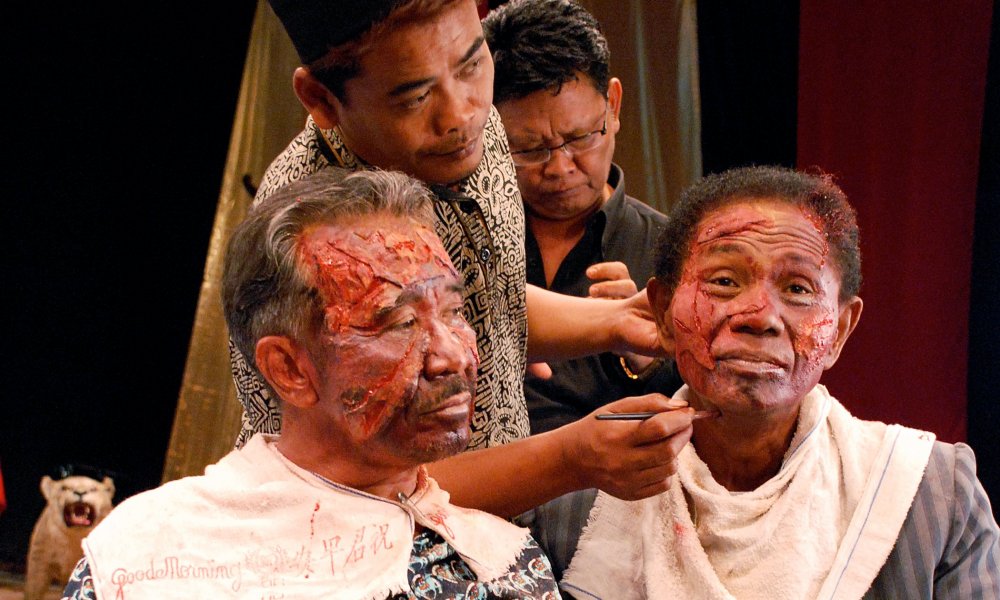
And he doesn’t really care how it makes him look; in fact he’s drawn to the pain of it, because that’s the thing he’s trying to deny. And in that sense the film is not a psychodrama; it’s not leading him towards redemption. I’m trying to document their dramatisations as instances of the celebration of genocide as a way of exposing a regime of impunity on behalf of survivors. He’s trying to run away from what he’s done.
There’s a curious tension; these two projects are not in opposition, there’s a peculiar synergy between them, but they’re in tension at the same time, and I think that’s the motor of the film. Anwar is trying to run away from what he’s done, only at the end to realise no matter how much storytelling he’s done he’ll never be free to shake off the damage that he’s done to others and to himself. He’ll never be able to replace the horror with the fiction, never bridge the gap between his fictional self and the reality of what he’s done.
And I think what’s causing that dry heave in the end is the growing terror: he’s choking on the terror that comes when you look at the abyss between yourself and your image of yourself. And I think that’s the horrible conclusion of the film… maybe it’s terrible or not terrible to you, but when we face our own mortality we do the same thing: there’s this yawning gap between what we tell ourselves about our lives and the reality that we’re headed in one way.
And in that last scene, his realisation or remorse is almost involuntary: his body catches up with the truth before his mind will.
There’s one line that’s not in the short version. He stands on the roof, and in both versions says, “This is where we captured, tortured and killed people. I know what I did was wrong, but I had to do it. And then he chokes. And then there’s a cut in the shorter version, because the scene becomes too long without the cut for the rhythm, because it has a different rhythm.
But in the longer version we have a rhythm where the scene can be all in one take, there’s no cut. And he pulls himself together and says “Why did I have to do it? My conscience told me they had to be killed.” So he’s still articulating the same rhetoric, even in a simple form, that he was at the very beginning of the film; he’s not consciously able to change; it’s just that the filmmaking has provided a safe space for his feeling to come out.
It was a terrible moment to film, because when he starts choking the second time, I wanted to say this stupid thing that Americans say, which is “It’s okay.” You know, put my hand on him and say “It’s okay.” Of course when you’re filming such a scene, before you do that you’re aware of the impulse to do it.
And it was an awful moment; I’ll never forget this feeling of, “Oh no, of course, he’s choking now because it’s not okay. And there’s nothing I can say that will make it okay, it’s simply not okay. He’s choking on the realisation, even if it’s unconscious, that he’s destroyed. It’s like he’s trying to vomit up the ghosts that haunt him, only to discover that he is the ghost. He is his past, and nothing will come up, there’s nothing to come up; he’ll never escape himself.
Anwar hopes if he can make a beautiful family movie about mass killing then he can somehow make it okay.
There’s also a final shot in the longer version which is different. In the shorter version he walks out; in the long one he just stands on the landing, which is a very telling moment. Before he left he just went halfway down to a landing and stood there, and it was like this unconscious acknowledgement that he will never leave this place. You’d think you’d want to get the hell out of there, but he’s in a kind of purgatory.
It’s something Werner Herzog said when he saw the film: “You know, these men have escaped justice but they’ve not escaped punishment.” I think it’s true. I’d rather be dead than live as either Adi or Anwar. And I’m afraid of death.
And now the film is wrapped? Has he stuck this up in his attic, or watched it?
Haman and Anwar have watched it. The political leaders in the film who have cameos, smaller roles, have not seen it. I know they’re powerful enough to act against the distribution of the film in Indonesia, so I’ve not shown it to them and I assume they’ll feel betrayed and hope they do.
I didn’t say much to them. They participated in the film because Anwar was making it with me; I didn’t have any access to them independently of Anwar. But I think they must hate the film and if they don’t there’s something wrong with it. I’ll understand if they do.
Adi hasn’t seen the film because he’s quite powerful and he understands exactly what the film will do. While he’s in the film he leaves it knowing what it will do, fighting with me about that in the car. You know, he says “this film will change the way we appear 180 degrees”… actually he says 360 degrees, but we’ll take that as an error on his part.
Herman saw the film and loved it. I think Herman along the way discovers acting and an actor’s loyalty to the truth – the poetic truth, if not the moral truth; maybe both. And he plays an important role in the film guiding Anwar back to the truth when Anwar sort of gets cold feet and starts to retreat into fantasy.
Anwar saw the film – I’ll never forget it; it was a really painful, tough day. While I was finishing the editing I was telling him “It’s getting done, do you want to see it? Can I show it to you? I’ll come to screen it to you.” And he would say this thing, in Indonesian, “maybe later”, which was a way of saying “No.” And I think it was because he understood exactly how painful the film would be.
Then I said “Look, it’s going to come out, Anwar. If you don’t want to see it, at least let me tell you what’s in it and make sure you really understand what’s coming, so if a paramilitary group is angry with you I can somehow know about it, and if we need to help you so you’re not scapegoated by them for making the film”, because he shouldn’t be, “then we can.” So I had this series of conversations around the time of Toronto and Telluride [the film’s festival premieres], explaining to Anwar what the film is.
Political leaders must hate the film, and if they don’t there’s something wrong with it.
Then when it came out in Toronto it became very big news, and he asked to see the film because he was suddenly at the centre of a big story. But then it was no longer safe for me to go to Indonesia, and we didn’t think he’d necessarily be able to travel abroad, although that’s proved incorrect: he still goes on golfing holidays with Anith, the guy with the very limited crystal.
So we took him to a place where there was good internet access and I could be with him the whole time on Skype, with a good resolution. And he watched the film, and sat in silence for a long time afterwards.
You can’t love this film if you’re a person in it; if it’s about you. But he was very moved, he was touched, he said “This film shows what it’s like to be me; I knew this was the film you were making. And I will be loyal to the film.” Those were his words. First he cried, left the room, pulled himself together and came back and said that.
And he has been loyal to the film. And he and I have been in touch pretty regularly ever seen, every couple of weeks, and it was this amazing moment when we sat in silence for a long time, kind of gazing. I felt like I was sitting next to him on this fishing platform, staring out into the darkness [a scene in the film]. It’s his darkness but really all of our darkness.
What precedents did you have in mind for the film? I can think of a couple of Cambodian documentaries that involve catching up with killers and recreating their acts…
I’m a big admirer of S21 and I really also like Rithy Panh’s work in general. Normally when we hear from perpetrators they either deny what they’ve done or they apologise for it. And that’s because by the time you address them as perpetrators, as opposed to serving military officers or prominent politicians, they’ve been removed from power and their acts have been declared criminal, so they deny or they apologise.
I think this film is fundamentally different from either S21 or Enemies of the People. Here, because the killers have won and remained in power, the whole film is an attempt to understand the imagination of a regime of impunity – and what happens to our humanity when we build our normality on terror and lies, and we use storytelling to deny the most awful parts of our reality, not to see it for what it is.
So I would say that while S21 was a milestone film for me, it was more by way of contrast. I’ve written about S21 and The Act of Killing – it wasn’t called that then, it was called Free Men: My Work with Perpetrators – in order to contrast them in a PhD I did as a way of keeping my UK visa for as long as I could, before I became a citizen of the UK. So I’ve thought a lot about that film, but think it’s fundamentally different.
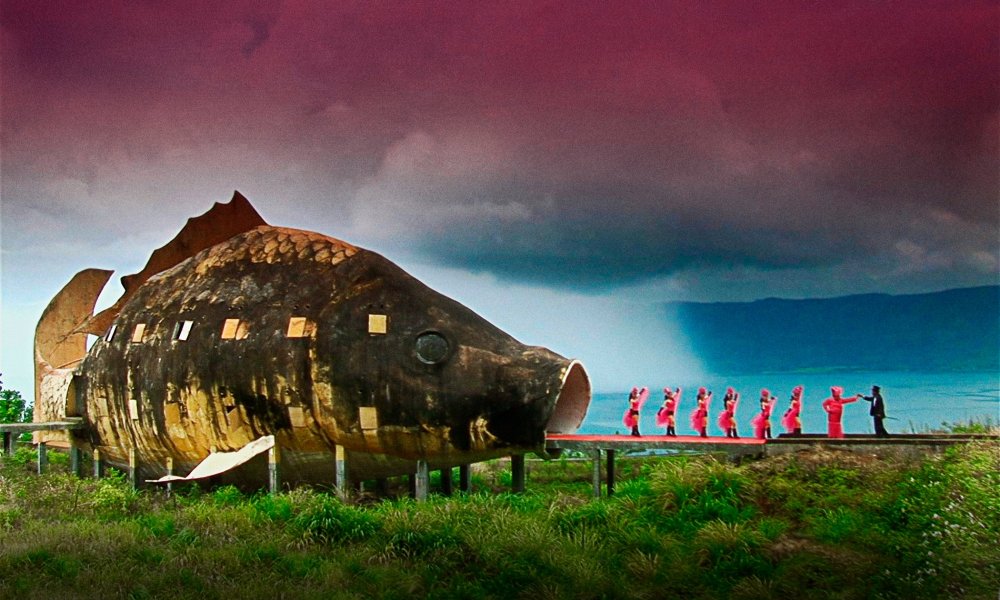
The Act of Killing (2012)
I would look to Jean Rouch as a precedent for me, [particularly] his films like Moi, un noir, Jaguar, Petit à petit, where he understood that every time you film anybody you’re creating a reality with that person.
I think it’s a great pity in the Anglophone world that we conflate cinéma vérité and Direct Cinema; they’re in fact ontological opposites. In Direct Cinema we create a fictional reality with characters and pretend we’re not that.
If I film a little boy going to school, the big event in the boy’s day is being filmed, and we pretend that it’s school. And we tell stories about the film, and I don’t think this is a problem, but like any fiction it requires a certain suspension of disbelief. And we tell stories about the work in order to encourage that suspension of disbelief – namely, that the filmmaker’s a fly on the wall, that the characters are totally used to the camera, which is almost always a fiction, a story told so the audience can suspend disbelief and appreciate it for the way a film needs to be appreciated in order for it to have meaning.
I think in cinéma vérité, by contrast, it was all about giving people the space to perform on camera, to imagine, to stage themselves on camera as a way of documenting how they see themselves and make sense of their world. In that sense I think cinéma vérité is trying to do something fundamentally more profound than Direct Cinema. I think Direct Cinema’s trying to be insightful by looking at reality in a very close way, while in fact much more is staged than we like to think. In cinéma vérité it’s about trying to make something invisible visible – the role of fantasy and imagination in everyday life.
So I would say precedents for me have been Rouch’s work, but also Kidlat Tahimik’s Perfumed Nightmare, Apichatpong Weerasethakul’s Mysterious Object at Noon and, this a weird example, but Werner Herzog’s Even Dwarves Started Small, where improvisation is the delirium of that movie. Those are my true inspirations.
It’s a pity in the Anglophone world that we conflate cinéma vérité and Direct Cinema; they’re ontological opposites.
People sometimes say this isn’t a true documentary, particularly when they see the longer version, because the editing is a little slower and you get immersed in the evolving nightmare. The surrealism that you have in both versions is, in the shorter version, a bit more the surrealism of their project and the characters’ strangeness, whereas in the longer version it takes over the form of the movie.
I would say the film might not be a documentary in a conventional sense, but it’s a non-fictional film. It’s inspiring to develop a method that gives us a deep insight into the most important and pressing questions in this situation, and I think that’s the responsibility of us as filmmakers: to identify the most urgent and pressing questions in the situation and go however far we need to go to dig into those questions.
And I think when you have questions that are as big and important as this, it demands a lot of time, maybe years, a lot of commitment. So this has taken me seven and a half years to make. And that’s why you also have to be very careful to make what films you choose to make, if you’re going to go as far as you really need to go to address what’s most important.
Did you know you would be in for anything like such a long haul?
I didn’t. I remember in 2007 there was a shoot which kept me awake at night in panic over how much we were shooting – 650 hours of material. And it was one of only five shoots.
We talked – is there a way of shooting less? There wasn’t. And by then we’d been shooting for a couple of years, so my cinematographer and I would sit there and I would talk with my anonymous co-director: how can we do this more economically? Because this is going to kill us.
It was hard to keep my confidence over all those years. When I started this Indonesians were barely using mobile phones; by the end everybody was on iPhones and BlackBerries, using Facebook and Twitter, and I thought “Indonesia’s moving on, why aren’t I?” And I thought nobody would care about this. Who cares about the 1965-66 massacres?My insecurity blinded me to the fact that of course time is what’s made it possible for people to really address this. It’s not just that the film is strong, but a younger generation of Indonesian is trying to make a life; they see this film and they don’t want to end up like Anwar or Adi.
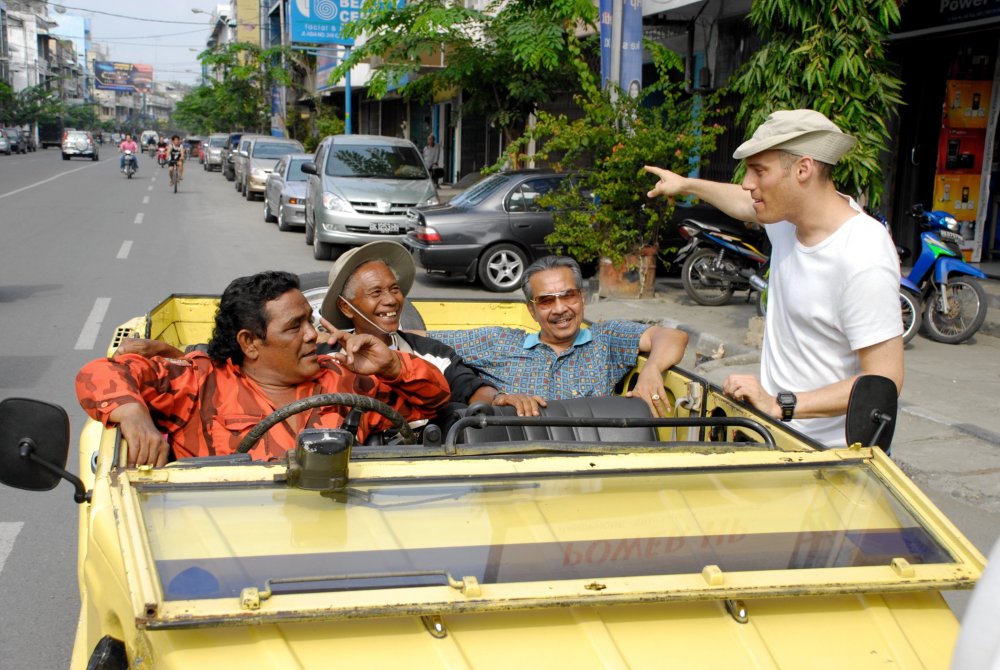
Ride with the devil: Joshua Oppenheimer directing Haji Anif, Anwar Congo and Adi Zulkadry on the streets of Medan, North Sumatra
The editors of Temple magazine – Indonesia’s biggest news magazine – saw the film at a closed screening in Jakarta last year. They were so upset and moved they said “We can’t stay silent or lie about this [genocide] any more, we have to be honest, say it happened and really start investigating.” And they sent 60 journalists all around the country, to remote regions and places where they didn’t even know the killings had taken places, to gather their own evidence that would justify the breaking of their silence.
Everywhere they went there were perpetrators, gangsters the army had used to carry out killings and rewarded them with power – and they were still in power and boastful, much like Anwar and his friends. And all over they found The Act of Killing was not just some unique thing that I’ve done, and not specific to North Sumatra, but applies to the whole country.
And sickened by this, they redacted down hundreds of pages of testimony to 75 pages, and there’s another 25 pages of pictures, and maybe 25 pages of coverage of The Act of Killing – reviews, essays, so forth. And they published this special double edition on 1 October, headlined “Stories from 1965’s executioners”, and that set the whole tone for the Indonesian media. And now the country’s leading historians, filmmakers, artists, writers, educators, intellectuals, journalists and human-rights activists are saying “We have to deal with this.” So… how did I come onto this? This is the problem with getting one hour of sleep…
It was so thrilling when this started happening, and people really cared. And it came to Indonesia like the little kid in the Emperor’s New Clothes, saying “Look, the king is naked,” and everybody knew it, but had been too afraid to say it.
But here it was shown so powerfully – and by the killers themselves, by the men who should be enjoying the fruits of their victory but instead are broken, destroyed by what they’ve done or utterly hollow and empty, morally and culturally. I think it’s a devastating image in this dark mirror, and that has meant people really care and take steps, at least in their own lives, as members of Indonesian civil society, not to travel the same path as the men in the film.
I was going to ask you what you hope the film will accomplish, but that’s a pretty good answer already…
One thing I can say very concretely: I hope the film will ultimately help lead to a presidential apology, to a truth commission, then reconciliation – because you can’t have reconciliation without truth first. A kind of commission that also delivers a verdict on the key architects on the killing.
That could include someone like the newspaper publisher in the film (Ibrahim Sinik), who’s the top anti-communist militia in north Sumatra, which is a very big region. But it maybe wouldn’t include the executioners, like Anwar and Adi, of whom there must be 10,000 across Indonesia. Because if you were to indict 10,000 killers you could have a civil war.
And I think there needs to be a presidential apology, a truth commission, then a reconciliation process, then some kind of judicial process that returns what happened to the realm of the forbidden. There needs to be a thorough rewriting of the nation’s history, its history curriculum in the schools. They need to close all the museums and monuments that celebrate the genocide, and turn those into exhibits in a much larger network of Indonesian holocaust museums.
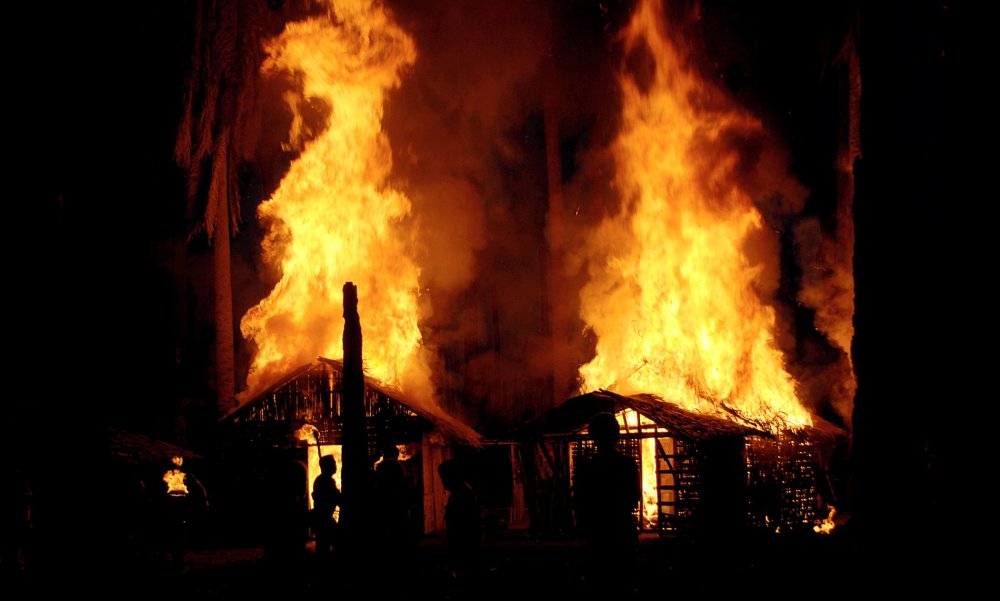
Then you start having some really difficult goals. You need to have a redistribution of the nation’s wealth from men who get it illegally and from terror, like (Haji) Anif, who’s stealing from their victims, to the millions of families who were subject to political apartheid and systematically impoverished over the decades. Because the relatives of the victims were discriminated against: they weren’t allowed access to the same schools, jobs and so forth. They were extorted in every encounter with officialdom: they had their land taken.
And also you need a movement against corruption in politics. That’s difficult because Indonesia’s politicians are corrupt, and that’s why they go into politics.
You need to have a movement against the use of gangsters by business, by corporations and politicians. That’s difficult because thugs are a major part of their arsenal. It’s how they achieve and maintain their power and wealth.
So there are some very difficult long-term goals that I hope the film, in its reflection on contemporary Indonesia, not just the past – how the past is alive in the present, how it is misused in the present – will help achieve. At least, I hope that the discussions which could lead to those movements could begin to happen partly in reaction to the film.
Some of these goals are so far-reaching that they bring us back to questions about the international order and the West, not to mention other injustices and genocides for which there’s been no restitution.
Yeah, the UK is built on the British empire, right? The United States is built on the holocaust of slavery and then more than a hundred years of segregation, and continued economic segregation and imperialism abroad.
When people ask, “What can the West do about this?”, which is a question I often get in Q&As, I have to say, look, we first must understand that the genocide, and military dictatorship which followed, the rule of gangsters that Western corporations also used to break strikes and clear land, that is the West’s vision for Indonesia. The West continues to support that vision.
People also ask me this other question: when you were filming, didn’t you feel like you wanted to escape, like you’d just had enough and wanted to go home? And I quickly understood that there was no escape: like I said, this is an integral part of our reality. When you go home to England, or Copenhagen, where I now live, you’re not escaping anything. Denmark is one of the most equal and fair societies in the world and yet we still depend on men like Anwar and his friends to terrorise everybody who makes everything that we buy. We still depend on the reality that we see in The Act of Killing, even in relatively just and humane Scandinavia.
Also, one anecdote. The first killer I met who offered to show me how he killed in the place where he did it, he took me to a riverside with a fellow death-squad member and showed me how every night he received busloads of victims from the army, took them down to the river and one by one cut off their heads.
I made this film contemporaneously with the evolving nightmare where my own country was not just practicing and condoning but celebrating torture.
And after showing me how he went about it he took out a little stills camera from his pocket and asked my sound recordist to snap pictures of him and the other death squad member, and indeed me, posing for his scrapbook. I absented myself from the scene as quickly as I could, but he had us take pictures with the river flowing behind us, and he was giving the thumbs-up and V-for-victory signs in this spot where he’d helped kill 10,500 people.
That was in February 2004, and I got home to England, very much feeling relieved to be out of there – it was a horrible thing to film, the first time I’d filmed anything like it. I started going through my footage, and in April 2004 photographs appear in the world’s media of American soldiers in Iraq giving the thumbs-up, V-for-victory signs while torturing people. And I made this film contemporaneously with this evolving nightmare, where my own country was not just practicing and condoning torture but celebrating it across much of the political spectrum, saying torture’s too good for these people, with army interrogators at Guantanamo getting methods of torture by watching Jack Bauer, just as Anwar was getting methods of torture watching gangster movies. This is really about all of us, and it’s not just about the impunity and the banality of evil; it’s also about the insistent fascination of evil, in which we also all implicated.
And that’s not to say that violent movies cause violent behaviour. If you look at the movie that Anwar cites in the film as using to help him kill, it’s an Elvis Presley musical. He says he’d watch it, dance his way across the street and kill happily. So maybe the real problem – because Elvis Presley musicals are not violent, they’re just a little stupid – is escapist entertainment and storytelling, our use of stories to escape from the brutal reality of our lives, or the reality of our lives, even when it’s not so brutal.
What did Errol Morris and Werner Herzog tell you when they became executive producers?
They came on board at different stages. Errol Morris saw clips, roughly edited scenes that we’d made to show people [early on]. I went to his office to go over the chapter in the book [Killer Images: Documentary Film, Memory and the Performance of Violence, co-edited by Joram Ten Brink and Oppenheimer], but I was hoping he’d be interested and look at the material, and he said “sure”, because he’s very nice, generous guy.
He watched it and I think he said he’d never seen anything like it, and [other] things maybe a bit more muted than what he said on record when he saw the final film. I don’t remember his exact words, but I remember feeling it was an amazing moment having him sit there watch it: I remember rising up above and seeing myself there with Errol watching my material and thinking “Oh my gosh, this is so exciting.”
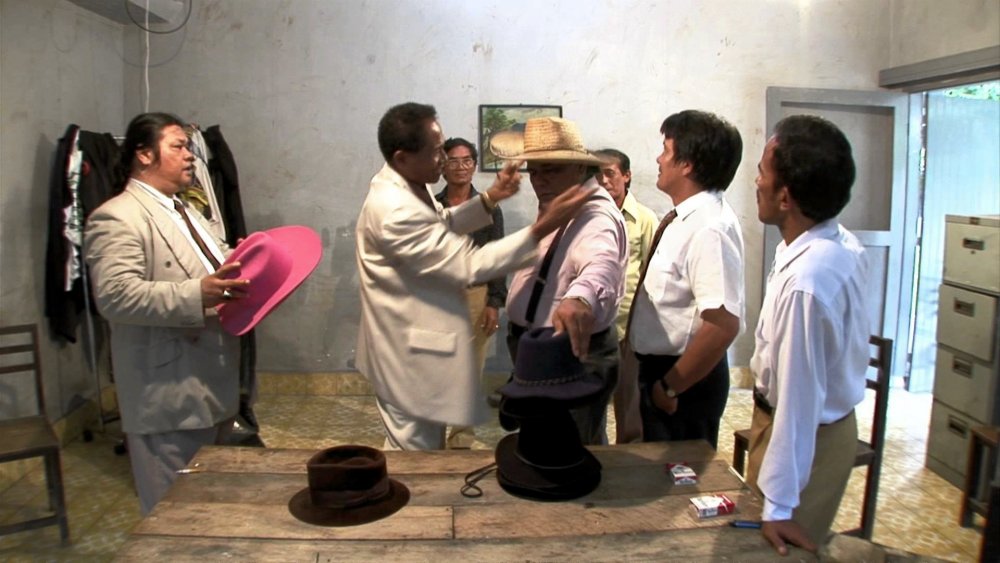
Werner saw the film once the long version, the director’s cut was done. He wrote me an email that said what he has said on the posters – it’s too embarrassing for me to repeat, but it said a lot. That was in the first email he wrote, and it was an amazing moment to receive such an amazing email. I mentioned earlier his Even Dwarves Started Small, but Stroszek, even more… those are two of my very favourite films in the world. So it was a very thrilling moment.
He’s been such an advocate for the film since it’s been completed, too. And of course he said “You can’t cut it down. What are you doing cutting such a film down?” And I said “We actually promised a 90-minute version for broadcasters. And I think there’s a chance if the film gets theatrical distribution that a lot of distributors will take the 90-minute version.” And he said “Okay, then let me look at rough cuts, just so you have my feedback, because you must be so blind after cutting such a film.”
So he watched rough cuts, and we found that distributors were indeed going to take a 90-minute version, because to take such a gamble, even with Werner’s endorsement, on a two-hour-40-minute film about a genocide that no one’s ever heard of – a film that’s very dark and may or may not succeed in festivals – was unlikely.
But after seeing the 90 minutes – which works; I think it’s a strong version of the film – I felt we should at least lengthen it to the length it could bear. The cutting-down process was relatively quick. It took three years to make the director’s cut, three months to bring it down to 90 minutes, and three weeks to expand it to two hours.
Now of course [with two different versions of the film about] the problem will be people getting used to a dramaturgy in which not much time has elapsed. People will be used to one dramaturgy, one structure, and expect it to end and it’s not ending yet, and people who’ve seen the long version will think really important things are missing in the shorter version.
It depends. I guess most people who have seen both like the longer version better. At least, that’s what they tell me. But as the maker, I would say it’s my [choice]. Otherwise it wouldn’t have existed and it would have been set aside as another rough cut.
And in the July 2013 issue of Sight & Sound
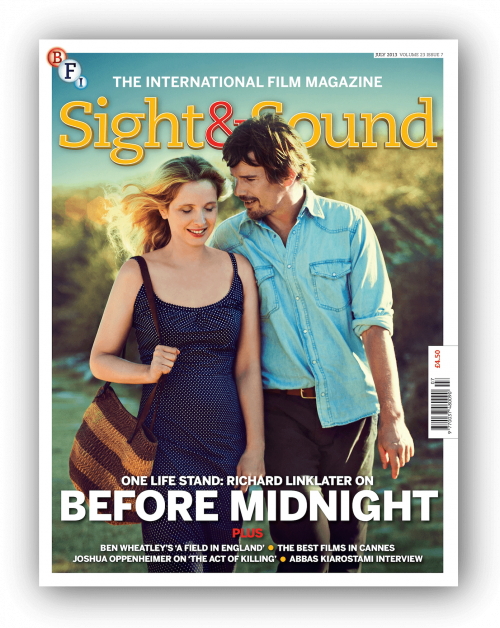
Build my gallows high
In The Act of Killing, the perpetuators of the massacres of millions of alleged communists in mid-1960s Indonesia re-enact their crimes – with extraordinary results, writes Nick Bradshaw.
Review: The Act of Killing
Oppenheimer’s massively overpraised film hides its tactics, decisions and historical context, argues Tony Rayns.




